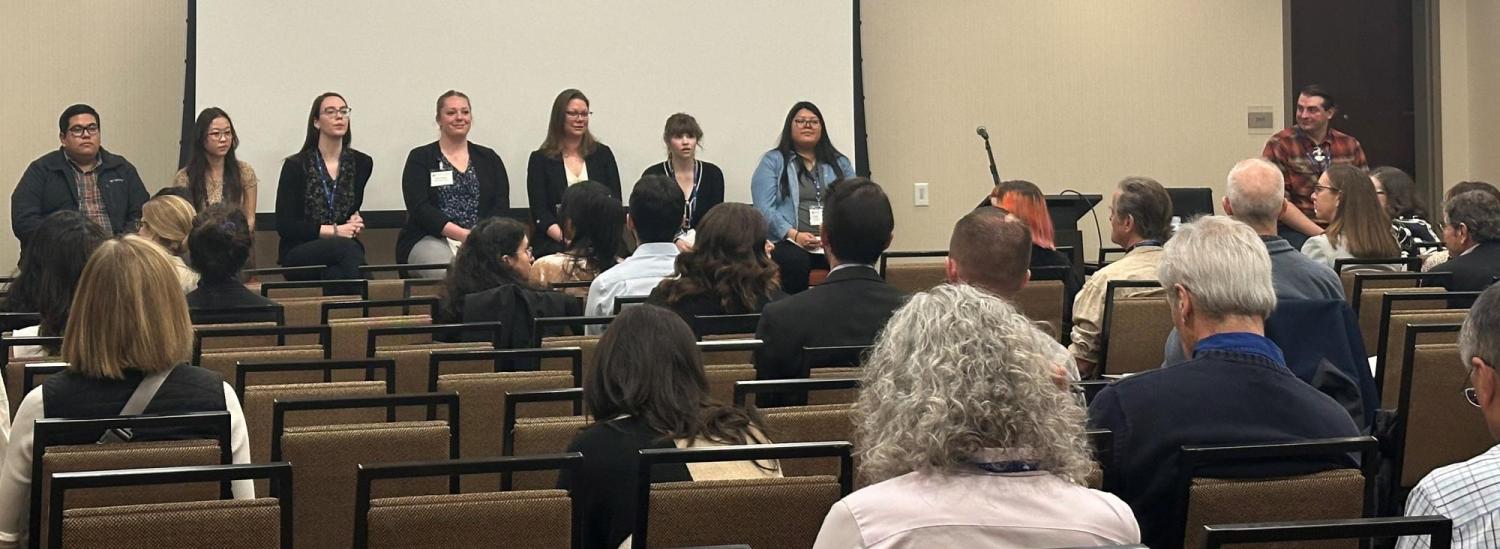Updates from the 2024 Colorado Water Congress Annual Convention
The Colorado Water Congress (CWC) winter convention in Aurora, CO has been buzzing with excitement. The conference kicked off with a series of water related workshops. Gregor MacGregor, Director of the Acequia Assistance Project at the Getches-Wilkinson Center (GWC), moderated a panel on the future generations of water leaders. One of the panelists, Mary Slosson, a 3L at the Colorado Law school, talked about the uncertainties of a legal profession in the water space. All of the students on the panel echoed the idea that we need young leaders to help drive change and that doing so requires organizations to work with the next generation of leaders to remove the barriers to access a career in the water sector. While this was happening, Jackie Corday with Corday Natural Resources Consulting, gave a training on SB23-270, describing how members within the state can restore natural streams without needing to obtain a water right. Other notable highlights included Author Erica Gies presentation on her recent book Water Always Wins which describes how to work with water rather than against it. The conference also jumped into the practical side of water by examining drought, resilience, and risk.
The first day of the conference ended with the POND casino night. The casino night has been a reoccurring event of the winter CWC convention because many of the conference topics center around risk tolerance. During the event, members of the Colorado Water Congress Board and I served as blackjack dealers for the night and helped people press their luck!
Day two of the conference focused on federal funding updates, legislative priorities, and how Colorado leaders plan to address our current issues. KC Becker, EPA Administrator for Region 8, talked about the funding available under the Bipartisan Infrastructure Law and Inflation Reduction Act. KC estimated that Colorado will see approximately $140 million dollars each year over the next three years to use for implementing water projects with an emphasis on disadvantaged communities. In addition, various mayors from across the state discussed how the legislature needs to begin integrating water planning and land use. Specifically, how replacing lawns and other non-usable grass with turf will help cut down on unnecessary water usage. Day two ended with a conversation between Dan Gibbs, the Executive Director of DNR and Phil Weiser, the Colorado Attorney General. They discussed the passion they share for the water community and the need for all water users to come together collectively and compromise to assure a water secure future for Colorado. Phil even gave a shoutout the the late Charles Wilkinson, Colorado Law Professor and namesake of the GWC, for the impact he had on both Phil and the larger water community.
The final day of the conference focused on cooperative action, what priorities states are looking to advance, and recognizing Kevin Rein with the Honorary Life Membership Award for his work as the Colorado State Engineer and Director of the Division of Water Resources. Members of the lower basin pointed to the 2007 guidelines, including the Drought Contingency Plan, and agreements with Mexico as major milestones in the cooperative effort to bridge the gap between the lower and upper basin. States also replied that we must begin looking for unique ways to save water whether that be infrastructure projects, cooperative agreements, or water conservation measures. Ultimately, it will take all of us to align our water usage and supply.
Clearly, a lot of ground was covered during CWC’s winter convention. If there was one take away, it would be that we need to begin analyzing the risk of inaction. If we keep waiting to take a stance or begin water infrastructure projects, we will only hurt Colorado and the Colorado River Basin in the long run. One way we can reduce the risks is by working with one another and allowing water to shape the future of our actions.


